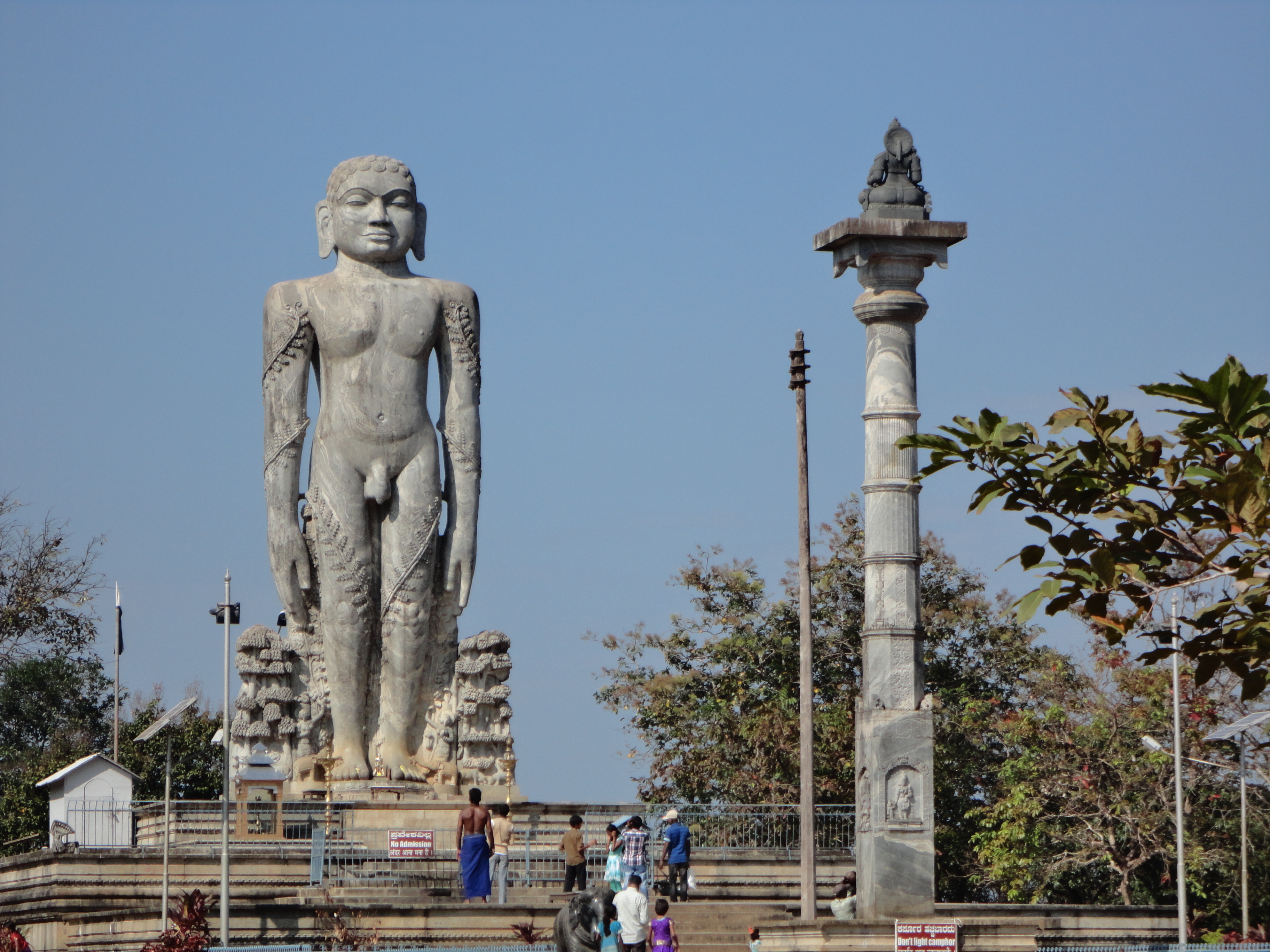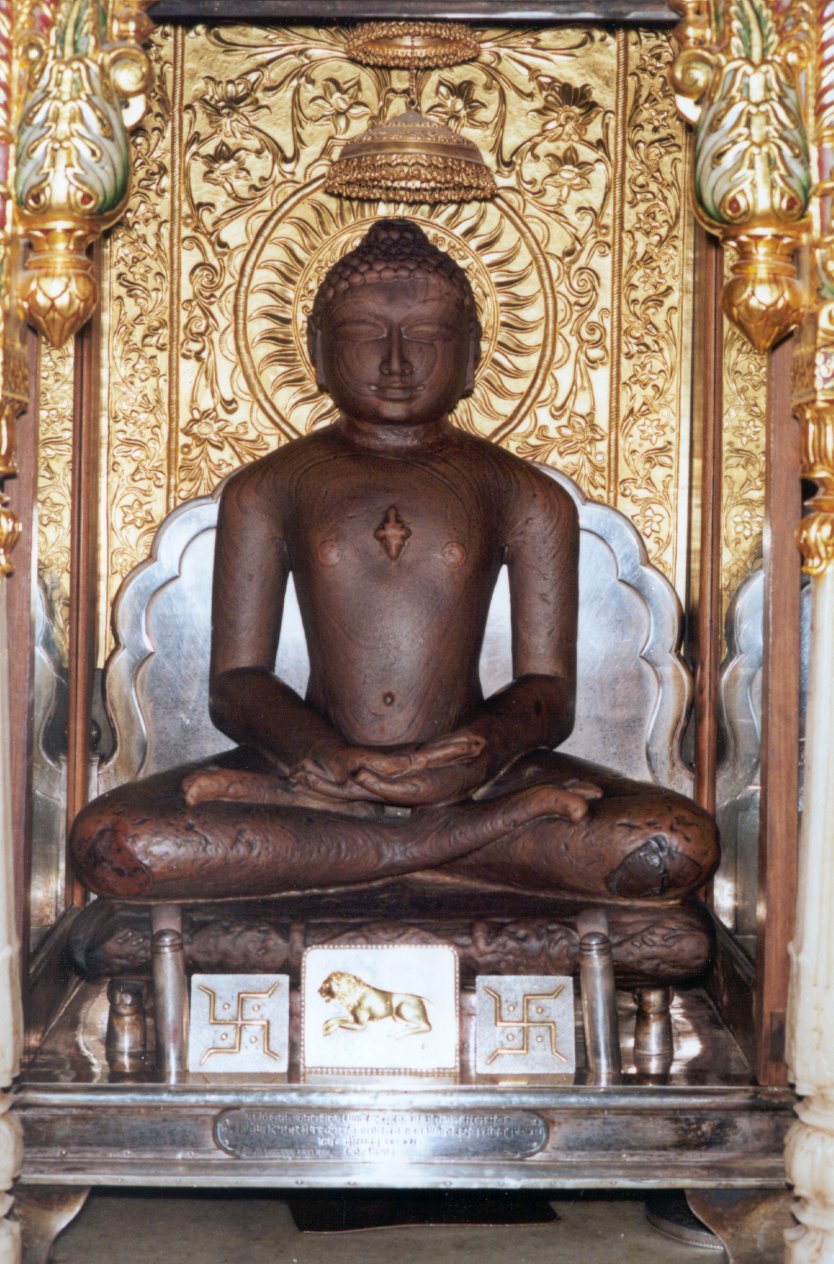|
Dravyasaṃgraha
' (Devnagari: द्रव्यसंग्रह) (Compendium of substances) is a 10th-century Jain text in Jain Sauraseni Prakrit by Acharya Nemicandra belonging to the Digambara Jain tradition. It is a composition of 58 ''gathas'' (verses) giving an exposition of the six '' dravyas'' (substances) that characterize the Jain view of the world: sentient ''( jīva)'', non-sentient ''(pudgala)'', principle of motion ''(dharma)'', principle of rest ''(adharma)'', space ''(ākāśa)'' and time ''(kāla)''.Acarya Nemicandra; Nalini Balbir (2010) p. 1 of Introduction It is one of the most important Jain works and has gained widespread popularity. ' has played an important role in Jain education and is often memorized because of its comprehensiveness as well as brevity. Author 10th century Jain Acarya, Nemicandra Siddhānta Cakravartin is regarded as the author of '. He was the teacher of Camundaraya—the general of the Western Ganga Dynasty of Karnataka. Nemicandra was a pro ... [...More Info...] [...Related Items...] OR: [Wikipedia] [Google] [Baidu] |
Nemichandra
Nemichandra (fl. c. 975), also known by his epithet Siddhanta Chakravarty, was a Jain acharya from present-day India. He wrote several works including '' Dravyasamgraha'', '' Gommatsāra'' (''Jivakanda'' and ''Karmakanda''), ''Trilokasara'', ''Labdhisara'' and ''Kshapanasara''. Life Nemichandra flourished around 975. He was popularly known as " Nemicandra Siddh ''ā''ntacakravartî" (i.e. the Paramount Lord of the Philosophy). He was the spiritual teacher of ''Cāmuṇḍarāya'' and their relation is expressed in the 1530 inscription in the enclosure of Padmavati temple, Nagar Taluka, Shimoga district. Nemichandra supervised the ''abhisheka'' (consecration) of the Gommateshwara statue (on 13 March 980). Works At the request of Chavundaraya, Nemichandra wrote '' Gommatsāra'' in 10th century, taking the essence of all available works of the great '' Acharyas''. ''Gommatasara'' provides a detailed summary of ''Digambara'' doctorine. He wrote ''Trilokasara'' based on the '' ... [...More Info...] [...Related Items...] OR: [Wikipedia] [Google] [Baidu] |
Nemicandra
Nemichandra (fl. c. 975), also known by his epithet Siddhanta Chakravarty, was a Jain acharya from present-day India. He wrote several works including ''Dravyasamgraha'', ''Gommatsāra'' (''Jivakanda'' and ''Karmakanda''), ''Trilokasara'', ''Labdhisara'' and ''Kshapanasara''. Life Nemichandra flourished around 975. He was popularly known as " Nemicandra Siddh ''ā''ntacakravartî" (i.e. the Paramount Lord of the Philosophy). He was the spiritual teacher of ''Cāmuṇḍarāya'' and their relation is expressed in the 1530 inscription in the enclosure of Padmavati temple, Nagar Taluka, Shimoga district. Nemichandra supervised the ''abhisheka'' (consecration) of the Gommateshwara statue (on 13 March 980). Works At the request of Chavundaraya, Nemichandra wrote ''Gommatsāra'' in 10th century, taking the essence of all available works of the great '' Acharyas''. ''Gommatasara'' provides a detailed summary of ''Digambara'' doctorine. He wrote ''Trilokasara'' based on the '' Til ... [...More Info...] [...Related Items...] OR: [Wikipedia] [Google] [Baidu] |
Jainism
Jainism ( ), also known as Jain Dharma, is an Indian religions, Indian religion whose three main pillars are nonviolence (), asceticism (), and a rejection of all simplistic and one-sided views of truth and reality (). Jainism traces its spiritual ideas and history through the succession of twenty-four , supreme preachers of ''dharma''. The first in the current time cycle is Rishabhadeva, who tradition holds lived millions of years ago; the 23rd is Parshvanatha, traditionally dated to the 9th century Common Era, BCE; and the 24th is Mahāvīra, Mahavira, who lived . Jainism is considered an eternal ''dharma'' with the guiding every time cycle of the Jain cosmology, cosmology. Central to understanding Jain philosophy is the concept of ''bhedavijñāna'', or the clear distinction in the nature of the soul and non-soul entities. This principle underscores the innate purity and potential for liberation within every Jīva (Jainism), soul, distinct from the physical and menta ... [...More Info...] [...Related Items...] OR: [Wikipedia] [Google] [Baidu] |
Acharya (Jainism)
An ''Āchārya'' () is the leader of an order of Jain ascetics (Munis), termed a sangh in the Jain tradition. Some of the famous achāryas are Bhadrabahu, Sthulibhadra, Kundakunda, Samantabhadra (Jain monk), Samantabhadra, Umaswati, Acharya Haribhadrasuri, Haribhadra, Hemachandra. In the Namokar Mantra, the five panch-paramsthis include Acharyas, Upadhyayas and the ordinary Munis(Sadhus). The lineage (line of ordination) of Āchāryas goes back to Lord Mahavira Swami. After the Ganadharas (immediate disciples of Lord Mahavira), there was a lineage of Kevalis (ending with Jambuswami), who were succeeded by Shrutakevalin, Shruta-Kevalis. After the last Shruta-Kevali Bhadrabahu, two separate lineages of Acharyas emerged, a Digambar lineage and a Shvetambara lineage. Several lineages of the Acharyas exist in both sects. The lineages became Bhattaraka or Yati lineages when it became impossible for them to travel freely. Reforms during the British period restored the Acharya linea ... [...More Info...] [...Related Items...] OR: [Wikipedia] [Google] [Baidu] |
Bahubali
Bahubali (, ) was the son of Rishabhanatha (the first ''tirthankara'' of Jainism) and the brother of the ''Chakravarti (Sanskrit term), chakravartin'' Bharata (Jainism), Bharata. He is a revered figure in Jainism. He is said to have meditated motionless for 12 years in a standing posture (''kayotsarga''), with climbing plants having grown around his legs. After his 12 years of meditation, he is said to have attained omniscience (''Kevala Jnana, kevala jnana''). Bahubali's other names are Kammateshwara and Gommateshwara, the namesake of the Gommateshwara statue dedicated to him. Legends The ''Adipurana'', a 9th-century Sanskrit poem, deals with the ten lives of the first ''tirthankara'', Rishabhanatha and his two sons Bharata Chakravartin, Bharata and Bahubali. It was composed by Jinasena, a ''Digambara monk''. Family life According to Jain texts, Bahubali was born to Rishabhanatha and Sunanda during the Ikshvaku dynasty in Ayodhya (Ramayana), Ayodhya. He is said to have e ... [...More Info...] [...Related Items...] OR: [Wikipedia] [Google] [Baidu] |
Digambara
''Digambara'' (; "sky-clad") is one of the two major Jain schools and branches, schools of Jainism, the other being ''Śvetāmbara'' (white-clad). The Sanskrit word ''Digambara'' means "sky-clad", referring to their traditional monastic practice of neither possessing nor wearing any clothes. Nakedness was the ideal practice of lord Mahavira and his immediate followers. Mahavira emphasized the importance of nakedness for monks. It symbolizes complete detachment and is an ideal form of conduct. Mahavira believed that renouncing clothes made the body immune to external influences like heat and cold, increasing resilience. Without clothes, a monk would avoid the distractions of acquiring, maintaining, and washing garments, allowing him to focus on spiritual growth and self-discipline. Digambara and Śvetāmbara traditions have had historical differences ranging from their dress code, their temples and iconography, attitude towards female monastics, their legends, and the texts the ... [...More Info...] [...Related Items...] OR: [Wikipedia] [Google] [Baidu] |
Dravya (Jainism)
''Dravya'' () means substance or entity. According to the Jain philosophy, the universe is made up of six eternal substances: sentient beings or souls ('' jīva''), non-sentient substance or matter (''pudgala''), principle of motion (''dharma''), the principle of rest ('' adharma''), space ('' ākāśa'') and time (''kāla'').Grimes, John (1996). Pp.118–119 The latter five are united as the ''ajiva'' (the non-living). As per the Sanskrit etymology, ''dravya'' means substances or entity, but it may also mean real or fundamental categories. Jain philosophers distinguish a substance from a body, or thing, by declaring the former as a simple element or reality while the latter as a compound of one or more substances or atoms. They claim that there can be a partial or total destruction of a body or thing, but no ''dravya'' can ever be destroyed. The Vaisheshika school of Indian philosophy also deals with a concept of ''dravya''. Classification and importance in Jainism The ''dra ... [...More Info...] [...Related Items...] OR: [Wikipedia] [Google] [Baidu] |
Tattvarthasutra
''Tattvārthasūtra'', meaning "On the Nature nowiki/>''artha''">artha.html" ;"title="nowiki/>''artha">nowiki/>''artha''of Reality [''tattva'']" (also known as ''Tattvarth-adhigama-sutra'' or ''Moksha-shastra'') is an ancient Jain text written by ''Acharya (Jainism), Acharya'' Umaswami in Sanskrit between the 2nd and 5th centuries CE. The ''Tattvārthasūtra'' is regarded as one of the earliest, most authoritative texts in Jainism. It is accepted as authoritative in both its major sub-traditions – ''Digambara'' and '' Śvētāmbara'' – as well as the minor sub-traditions. It is a philosophical text, and its importance in Jainism is comparable with that of the ''Brahma Sutras'' and ''Yoga Sutras of Patanjali'' in Hinduism. In an aphoristic sutra style of ancient Indian texts, it presents the complete Jainism philosophy in 350 sutras over 10 chapters. The text has attracted numerous commentaries, translations and interpretations since the 5th-century. One of its sutras, '' ... [...More Info...] [...Related Items...] OR: [Wikipedia] [Google] [Baidu] |
Arya Meter
''Āryā metre'' is a metre used in Sanskrit, Prakrit and Marathi verses. A verse in metre is in four metrical lines called ''pāda''s. Unlike the majority of metres employed in classical Sanskrit, the metre is based on the number of s ( morae) per . A short syllable counts for one , and a long syllable (that is, one containing a long vowel, or a short vowel followed by two consonants) counts for two s. It is believed that metre was taken from the gāthā metre of Prakrit. metre is common in Jain Prakrit texts and hence considered as favourite metre of early authors of Jainism. The earlier form of the metre is called old , which occurs in a some very early Prakrit and Pāli texts. Āryā The basic verse has 12, 18, 12 and 15 s in the first, second, third, and fourth ''pāda''s respectively. An example is the following from Kālidāsa's play ''Abhijñānaśākuntalam'' (c. 400 CE): : : : : : : : – u u , – – , u u – : u – u , – – , u – u , – – , ... [...More Info...] [...Related Items...] OR: [Wikipedia] [Google] [Baidu] |
Pancastikayasara
''Pañcāstikāyasāra'' ("The Essence of Reality") is an ancient Jain text authored by Acharya Kundakunda. Kundakunda explains the Jain concepts of ''dravya'' (substance) and Ethics. The work serves as a brief version of the Jaina philosophy. There are total 180 verses written in Prakrit language. The text is about five (''panch'') ''āstikāya'', substances that have both characteristics, viz. existence as well as body. A modern English translation was published by Vijay K. Jain in 2018. Āstikāya The five ''āstikāya'' mentioned in the text are :— # Jīva (soul), # Pudgala (matter), #Dharma (medium of motion), #''Adharma Adharma is the Sanskrit antonym of dharma. It means "that which is not in accord with the dharma". Connotations include betrayal, discord, disharmony, unnaturalness, wrongness, evil, immorality, unrighteousness, wickedness, and vice. Descriptio ...'' (medium of rest), and # Akasa (space) Notes References * * * {{Jainism Topics Atomis ... [...More Info...] [...Related Items...] OR: [Wikipedia] [Google] [Baidu] |




